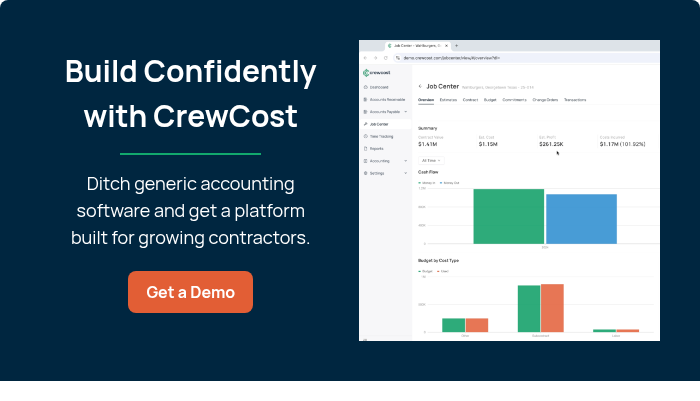👉🏻 Download the schedule of values template.
Out of all the documents involved in a project, your Schedule of Values is one of the most important. The Schedule of Values is a comprehensive price breakdown, allocating your total contract amount across every single work item. With this document, contractors and stakeholders alike can easily track job completion and amounts due.
The SOV plays a huge role in managing both job oversight and progress payment applications. Because of the financial transparency it offers, it keeps all parties on the same page and helps avoid misunderstandings that could lead to distrust.
Let’s walk through how to use this customizable schedule of values template to help save time and stay on top of your projects.
Understanding the Structure of an SOV
Before you dive into using this Schedule of Values template, let’s revisit the basics of what makes an effective SOV (or read our in-depth guide to schedule of values first).
A well-structured Schedule of Values will include:
- Progress milestones – generally line items that account for labor, materials, equipment, subcontractors, and other cost types, along with their associated costs
- Previous and current billing amounts
- Percentage of task completion or units completed
- Remaining amounts due for each milestone
- Retainage for each work item, along with how much has been withheld to date (if applicable)
Once you have those down, here are a few extra tips on organizing and formatting your SOV:
- Make sure to break down all up-front costs into individual line items. For example, expenses like mobilization and material storage would each have their own line under this category.
- Group work items by the specific job task or milestone. Costs for things like insurance, bonding, and contingency should be kept separate from actual work items.
- Try to maintain a consistent profit margin spread evenly across all of your line items to minimize risk.
- Round values off to even numbers when you can. For example, $150,000.00 is much easier to understand and track than $149,987.62.
How to Use Our Schedule of Values Template
Using our free Schedule of Values Excel template is super simple. Starting at the top of the spreadsheet, you’ll find fields for project-specific information, including the job number, project identifier, and your business name. You’ll also find a section related to payment applications, including the application number, date, and billing period.
The main body of the spreadsheet contains fields related to specific work tasks and project milestones. Some fields will require your input, while others will update automatically according to preset formula calculations.
For each milestone, you’ll enter an item number, a description of the work to be performed, and the corresponding total scheduled value for each line item, as indicated by the column headings.
The “Work Completed” section indicates payments from previous applications along with the amount due for the current billing period. Any amounts for stored materials relative to specific milestones should be entered in the appropriate adjacent cell.
Next, your totals to date, percentage of completion, and the balance remaining for each milestone are automatically calculated according to built-in formulas. Any applicable retainage is calculated as well based on the industry-standard amount of 10 percent. If you need to modify this formula, it’s as simple as changing the percentage in the corresponding cell to the contracted amount (don’t forget to include the % symbol). Finally, each column’s totals are displayed across the bottom of the template.
External vs. Internal Schedule of Values
Remember there are two schedules of values you are creating, an internal and external version. The external version is what you will be charging the customer for the work you are going to perform based on how they need you to break out your scope of work for the schedule of values. This external schedule of values is what will be your billing.
The internal schedule of values you have is your cost to perform the work. It can follow the same line items you are using to bill the customer, or you could create a different schedule which would also be called your budget. If you use the same schedule of values for the work you are going to perform you will need to be able to track it which will lead into your billings.
An easy example of this is if you had a trailer onsite for a project that runs one year and it is a line item on the schedule of values. The trailer costs you $1000 a month. This job has a 10% profit margin. On your external schedule of values you would charge the customer $1100 a month, and your internal schedule of values would show the $1000 a month in cost.
More Tips on Accurate Cost Tracking
Before sending over your initial estimates on a job, take a closer look into the details of the job expenses. This will not only help you provide the most accurate estimate possible, but will help you avoid excessive or inflated prices that could potentially lead to overbilling down the line.
Also, don’t forget to make regular updates to your Schedule of Values to reflect a job’s current progress and payments, along with any change orders or milestone modifications. Maintaining proper documentation and regular reconciliation against your actual expenses will help you stay on top of your cash flow.
👉 Take a tour of CrewCost and see what it's like to work out of accounting software that was built for construction. Get a demo today!
Keep Reading

